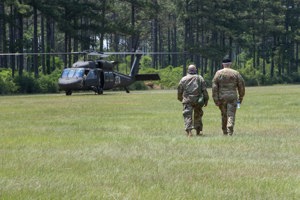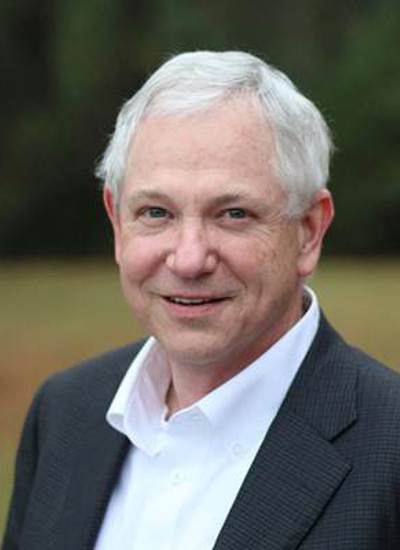- Home >
- Strategic Plan and Focus Areas >
- Sentinel Landscapes in the Southeast
Sentinel Landscapes in the Southeast


About
Population growth, poorly planned development, incompatible land uses, extreme weather events, and climate change impacts, threaten the ability of military installations to carry out their missions and to deliver their economic and other benefits to places where they are located. In response to these growing challenges, the U.S. Departments of Agriculture (USDA), Defense (DoD), and the Interior (DOI) established the Sentinel Landscapes Partnership to strengthen military readiness, conserve natural resources, bolster agricultural and forestry economies, and increase climate change resilience.
The SERPPAS Sentinel Landscapes Work Group connects designated Sentinel Landscapes in the Southeast to address shared challenges, share lessons learned, and advance the Sentinel Landscapes Partnership’s mission in the Southeast. The Work Group disseminates information to emerging partnerships in the Southeast pursuing designation and serves as a regional coordinating body among currently designated and future Sentinel Landscapes.
Sentinel Landscapes benefit the military mission and the other partner missions by connecting with private landowners and promoting compatible land use near military installations; strengthening the economies of forests and farms surrounding military bases; protecting large, connected natural areas; improving coordination between the military services, local governments, and state and federal agencies; and encouraging state interests and prioritization of resources supporting military installations, participating landowners, and surrounding communities.
Strategic Objectives
- Coordinate with the Office of Local Defense Community Cooperation (OLDCC) on status of ongoing and future Compatible Land Use Planning efforts in the Southeast and share relevant information with SERPPAS work groups and Steering Committee.
- Focus on exploring and promoting innovative ways to increase the number and type of compatible land use tools to encourage increased landowner participation to conserve working lands and promote resilience where appropriate.
- Leverage the ‘Power of SERPPAS’ to attract both financial and non-financial support to increase awareness and capacity for the implementation of Sentinel Landscapes designated in the region.
- Expand coordination and collaboration between all SERPPAS work groups to better integrate actions that complement and support the Sentinel Landscapes Partnership goal of addressing shared encroachment challenges and climate impacts affecting conservation, working lands, and military mission.
- Assist Sentinel Landscapes in the Southeast to assess their climate exposures and vulnerabilities and integrate resilience planning and adaptation into their landscape implementation plans.
- Use the SERPPAS network to share information, resources, and lessons learned of the Sentinel Landscapes Partnership to demonstrate the value and purpose of these partnerships and communicate the benefits to military installation leadership and other key SERPPAS partners.
Work Group Lead

Bruce Beard
Associate Director of PolicyTexas A&M Natural Resources Institute
bruce.beard@ag.tamu.edu
Bruce Beard is the Texas A&M Natural Resources Institute’s Associate Director for Policy and leads NRI’s Military Land Sustainability Program. Bruce brings more than 30 years of federal land management and natural resource policy experience to NRI and is a nationally recognized advocate for Sentinel Landscapes.
Bruce served within the Executive Office of the President at the Office of Management and Budget in three Administrations, where he was a principal advisor on federal land management and natural resource policy issues. He was the OMB Branch Chief for the Interior Branch responsible for coordination of budget, legislation and regulatory issues affecting the Department of the Interior. At the Department of Defense, he was instrumental in establishing the Readiness and Environmental Protection Integration (REPI) Program, which he directed, and helped to initiate the Sentinel Landscapes Partnership between the Departments of Agriculture, Defense and the Interior.
Bruce earned his Bachelor of Science in wildlife and fisheries from Texas A&M University, and a Master of Public Affairs in environmental policy from Indiana University’s School of Public and Environmental Affairs. He received the 2011 Outstanding Alumni Award from the College of Agriculture and Life Sciences at Texas A&M and the 2012 Secretary of Defense Medal for Meritorious Civilian Service at the Department of Defense.
Request to Join Work Group
Resources
Documents

2024 Catalyst Fund Grant Awards
9/30/24
The Network for Landscape Conservation is pleased to announce 15 Catalyst Fund grant awards for Partnerships working to implement place-based, community-grounded conservation at the necessary landscape scale. Catalyst Fund grants are intended to allow for strategic investments in strengthening a Partnership’s collaborative capacity in ways that create enduring forward momentum within the Partnership and accelerate conservation progress into the future. Congratulations to the winners in the SERPPAS footprint in Florida and South Carolina!
Visit the SERPPAS News Archive
FEMA Joins the Sentinel Landscapes Partnership to Support Climate Resilience and Military Readiness
9/24/24
The Sentinel Landscapes Partnership announced the addition of the Federal Emergency Management Administration (FEMA) to its Federal Coordinating Committee (FCC). The FEMA Office of Resilience joins the U.S. Department of Agriculture (USDA), the Department of Defense (DOD), and the Department of the Interior (DOI) in designating sentinel landscapes to support mutually beneficial land-use and climate resilience around military installations across the country. FEMA joins the FCC following the signing of an addendum to the Sentinel Landscapes Memorandum of Understanding.
Visit the SERPPAS News Archive
Interior Department Announces More Than $157 Million in Funding for Wetland Conservation Projects and National Wildlife Refuges
9/10/24
The Department of the Interior announced that more than $46.2 million in grants was approved by the Migratory Bird Conservation Commission which will conserve or restore 91,425 acres of wetland and associated upland habitats for waterfowl, shorebirds, and other birds in 17 states. These grants, made through the North American Wetlands Conservation Act (NAWCA), will be matched by more than $99.1 million in partner funds.
Visit the SERPPAS News Archive
Acting Deputy Secretary Daniel-Davis Announces $236 Million from President Biden’s Investing in America Agenda for Wildfire Resilience and Recovery
9/10/24
The Department of the Interior announced $236 million in funding allocations from President Biden’s Investing in America agenda to support wildland fire management into fiscal year 2025 across the nation. The funding will help reduce risk from wildfires, support improved wildland firefighter training, expand efforts to rehabilitate burned areas in collaboration with partners, and advance wildfire science. Today’s announcement brings the total the Department of the Interior has allocated for wildland fire management from the Bipartisan Infrastructure Law to nearly $1.1 billion across the nation since it went into effect in fiscal year 2022.
Visit the SERPPAS News Archive
Secretary Haaland Highlights New Investments in Park Infrastructure, Outdoor Access and a Growing Outdoor Economy in North Carolina
8/27/24
In August, DOI Secretary Haaland and Assistant Secretary Estenoz toured restoration projects on the Blue Ridge Parkway funded by the Great American Outdoors Act (GAOA), including Doughton Park and Laurel Fork Bridge. The Blue Ridge Parkway is one of the most visited units in the National Park System, supporting nearly 18,000 jobs and generating a cumulative $1.7 billion to local economies along the 469-mile road in 2022 alone. To address long-overdue maintenance and infrastructure needs, the Blue Ridge Parkway has received $253 million total from GAOA’s Legacy Restoration Fund (LRF), helping improve visitor experience and public safety.
Visit the SERPPAS News Archive
Fort Huachuca Sentinel Landscape Documentary Released
8/5/24
The Sentinel Landscapes Partnership is excited to join the Fort Huachuca Sentinel Landscape in announcing the release of the Fort Huachuca Sentinel Landscape Documentary, a film that celebrates the power of partnerships to advance climate and installation resilience. Filmed at Fort Huachuca in southeastern Arizona and produced by the University of Arizona, the documentary showcases the natural beauty of the Fort Huachuca Sentinel Landscape and the collaborative partner efforts that have made this landscape so successful.
Visit the SERPPAS News Archive





Events & Webinars
- Forests & Water Forum
-
October 22 - 23, 2024
Gainesville, FL - Coastal Forests as Sentinels of Climate Change and Sea Level Rise
-
October 23, 2024
Webinar (hosted by Forest Health) - PFAS Regulatory Update and What’s to Come
-
October 30, 2024
Webinar (hosted by Regenesis) - Department of Defense Energy and Environment Innovation Symposium
-
December 3 - 6, 2024
Washington, DC - Navigating Military Readiness Through Responsible Project Execution
-
December 11, 2024
Webinar (hosted by REPI) - Drought and Aquatic Ecosystems in the Southeast U.S. Workshop
-
January 7 - 9, 2025
Raleigh, NC - 2025 Southeast Land Conservation Conference
-
March 26 - 28, 2025
Ashville, NC







